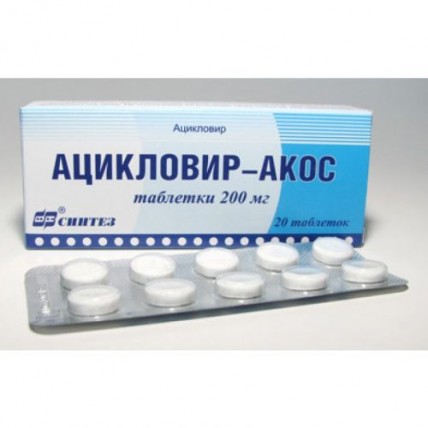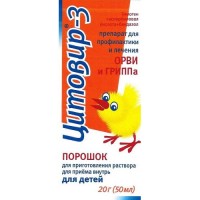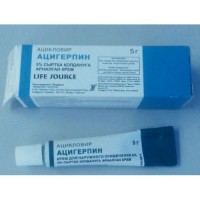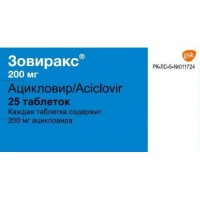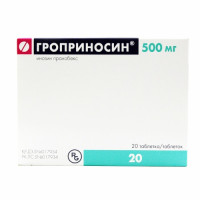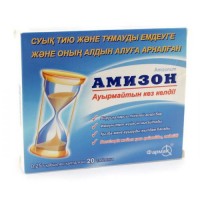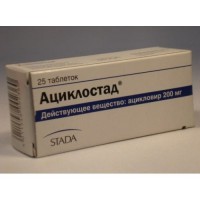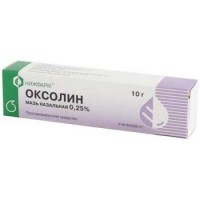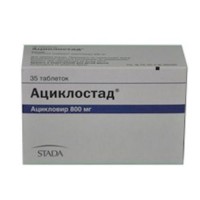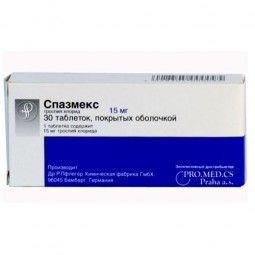Acyclovir-Akos 200 mg (20 tablets)
- $4.10
The instruction for medical use
of ATSIKLOVIR-AKOS medicine
the Trade name
of ATSIKLOVIR-AKOS
the International unlicensed
name Acyclovir Dosage Form of the Tablet, 0.2 g
Structure
One tablet contains
active agent acyclovir (in terms of anhydrous substance) 0.2 g,
excipients: potato starch, magnesium stearate, talc
the Description
of the Tablet of white color ploskotsilindrichesky with a facet and risky
Pharmacotherapeutic group
Antiviral drugs for system use. Nucleosides and nucleotides.
The code of automatic telephone exchange J05AB01
the Pharmacological
Pharmacokinetics Later properties of intake is partially soaked up in intestines, because of low lipophilicity absorption after oral administration of 200 mg of 20% (15 - 30%), however at the same time the dose-dependent concentration sufficient for effective treatment of viral diseases are created. Food has no considerable impact on acyclovir absorption. With increase in a dose the bioavailability decreases.
The maximum concentration (Cmax) after appointment in 200 mg of 5 times in day of 0.7 mkg/ml, the minimum concentration (Cmin) of 0.4 mkg/ml, time of achievement of the maximum concentration 1.5-2 hours. Communication with proteins of blood plasma of 9 - 33%.
Gets through a blood-brain barrier. Well concentration in cerebrospinal fluid of 50% of that in blood gets into bodies and fabrics (including a brain, kidneys, lungs, a liver, watery moisture, plaintive liquid, intestines, muscles, a spleen, breast milk, a uterus, a mucous membrane and secretion of a vagina, sperm, amniotic liquid, contents of herpetic bubbles). Acyclovir gets through a placenta, with breast milk is emitted in insignificant concentration. After intake in a dose of 200 mg of 5 times/days acyclovir is defined in breast milk in the concentration making 0.6 4.1% of plasma concentration (at such concentration in breast milk the children who are on breastfeeding can receive acyclovir with mother's milk in a dose to 0.3 mg/kg/days).
It is metabolized in a liver with formation of a metabolite 9-carboxy-metoksimetilguanina.
It is removed by kidneys by glomerular filtration and canalicular secretion: at intake the most part in not changed look (62 - 91% of a dose) and in the form of a metabolite (on average 14%). Less than 2% are removed through digestive tract, trace quantities are defined in expired air.
At a single session of a hemodialysis during 6 h the concentration of acyclovir in plasma decreases approximately by 60%, at peritoneal dialysis the clearance of acyclovir considerably does not change.
Elimination half-life (T1/2) at intake the adult 3.3 h, at children and teenagers from 1 year to 18 years have 2.6 h. Clearance rate slows down with age, but T1/2 of active drug increases slightly.
At patients with heavy chronic kidney disease of T1/2 to the 20th Part T1/2 in a renal failure (at adults depending on values of the clearance of creatinine (CC)): at KK of 80 ml/min. of 2.5 h, 50-80 ml/min. of 3 h, 15-50 ml/min. of 3.5 h, at an anury of 19.5 h, during a hemodialysis of 5.7 h, at continuous out-patient peritoneal dialysis of 14-18 h.
At simultaneous administration of acyclovir and a zidovudine to HIV-positive patients pharmacokinetic characteristics of both drugs practically do not change.
A pharmacodynamics
Antiviral (anti-herpetic) means a synthetic analog of a purine nucleoside which has ability to inhibit in vitro and in vivo replication of the Herpes simplex viruses of type 1 and 2, the Varicella zoster virus, Epstein-Burra's virus and cytomegalovirus.
It is highly active concerning the Herpes simplex 1 and 2 viruses of type, the virus causing chicken pox and shingles (Varicella zoster), Epstein-Barre's virus (types of viruses are specified in ascending order of the size of the minimum overwhelming concentration of acyclovir). It is moderately active concerning a cytomegalovirus. In the infected cells containing a virus thymidinekinase there is a phosphorylation and transformation of acyclovir in acyclovir monophosphate. Under the influence of acyclovir guanylate cyclase, monophosphate will be transformed to diphosphate and under the influence of several cellular enzymes in triphosphate. Sharp selectivity of action on viruses and hypotoxicity for the person are caused by the fact that acyclovir is not substrate for enzyme of a thymidinekinase of not infected cells therefore it malotoksichen for cells of mammals.
Acyclovir triphosphate inhibits synthesis (replication) of DNA of a virus three mechanisms:
1) competitively substitutes deoksiguanozin triphosphate in DNA synthesis,
2) it is built in a synthesizable chain of DNA and stops its lengthening,
3) enzyme a virus DNA polymerase oppresses.
Reproduction of a virus in an organism is as a result blocked.
The specificity and very high selectivity of effect of acyclovir are also caused by its primary accumulation in the cells affected with viruses. Has immunopromoting effect.
Indications
- a herpes simplex of skin and mucous membranes (primary and recurrent)
- genital herpes (primary and recurrent)
- the shingles (surrounding herpes)
- chicken pox (in the first 24 hours after appearance of typical rash)
- at patients with the expressed immunodeficiency (including after transplantation, at intake of immunosuppressive medicines, at HIV-positive patients, against the background of chemotherapy)
Inside, irrespective of meal to wash down the Route of administration and doses with a full glass of water.
The adult for treatment of a herpes simplex of skin and mucous membranes on 200 mg of 5 times a day (each 4 h during wakefulness, except for night sleep) within 5 days, if necessary duration of treatment can be prolonged. At treatment of patients with an immunodeficiency the single dose of drug has to be increased up to 400 mg, duration of a course of 10 days and more.
The adult for treatment of genital herpes on 200 mg of 5 times a day (each 4 h during wakefulness, except for night sleep) within 10 days, if necessary duration of treatment can be prolonged. At treatment of patients with an immunodeficiency the single dose of drug has to be increased up to 400 mg.
Treatment needs to be begun as soon as possible after developing of an infection, at a recurrence it is recommended to appoint drug already in a prodromal stage or at emergence of the first elements of rash.
For prevention of a recurrence of the infections caused by a herpes simplex virus (including at patients with an immunodeficiency), drug is appointed on 200 mg by 4 times a day (each 6 hours). To patients with the normal immune status for prevention of a herpes simplex of skin and mucous membranes, it is possible to appoint 400 mg 2 times a day (each 12 hours). In case of the expressed immunodeficiency (after bone marrow transplantation or at disturbance of absorption from intestines) on 400 mg of 5 times a day.
Recurrent genital herpes (less than 6 episodes a year): faltering therapy on 200 mg of 5 times a day within 5 days. Recurrent genital herpes (more than 6 episodes a year): long overwhelming therapy on 400 mg 2 times a day or on 200 mg of 3-5 times a day (duration of a course is up to 12 months).
Duration of a preventive course of therapy is defined by the period duration when there is a risk of infection.
At treatment of shingles (the surrounding herpes) on 800 mg of 5 times a day (each 4 h during wakefulness, except for night sleep) within 7-10 days.
The maximum single dose on reception of 800 mg.
The patients accepting high doses inside have to receive enough liquid.
To children 3 years drug are aged more senior appoint in the same dose, as the adult.
Treatment of chicken pox: to adults and children 6 years on 800 mg 4 times a day are more senior, children are 3-6 years old on 400 mg 4 times a day. More precisely the dose can be determined at the rate of 20 mg/kg, but no more than by 800 mg 4 times a day. Course of treatment of 5 days.
At patients with renal failures the correction of doses and the mode of dosing depending on the size of clearance of creatinine and a type of an infection is necessary. For treatment of the infection caused by Herpes simplex at clearance of creatinine a daily dose of drug it is necessary to reduce less than 10 ml/min. to 400 mg, having divided it into 2 receptions (with intervals between them not less than 12 h, t.e on 200 mg 2 times a day). At treatment of the infections caused by Varicella zoster and at maintenance therapy of patients with the expressed immunodeficiency - to patients with clearance of creatinine of 10-25 ml/min. appoint drug in a dose of 2.4 g/days in 3 receptions with an interval of 8 h (on 800 mg 3 times a day). At patients with clearance of creatinine less than 10 ml/min. reduce a daily dose to 1.6 g, frequency rate of reception 2 times a day with an interval of 12 h (on 800 mg 2 times a day).
Side effects
Very seldom
- nausea, vomiting, diarrhea, an abdominal pain, reversible increase in level of bilirubin and activity of liver enzymes
- anemia, a leukopenia, thrombocytopenia
- an acute renal failure
- dizziness, confusion of consciousness, a hallucination, drowsiness, paresthesias, spasms, a coma (usually these side effects were observed at patients with a renal failure who took the drug in the doses exceeding recommended)
Seldom
- increase in level of urea and creatinine in blood
- a headache
- allergic reactions: sometimes - rash, a photosensitization, urticaria, an itching, seldom short wind, a Quincke's disease, an anaphylaxis, fever, a limfoadenopatiya, peripheral hypostases, a disorder of vision, agitation, myalgia
- other: sometimes - fast fatigue, seldom
the Contraindication alopecia
- hypersensitivity to acyclovir
- preventive use of drug for patients with impaired renal function or an anury
- the lactation period
- children's age up to 3 years
Medicinal interactions
Strengthening of effect is noted at co-administration of immunostimulators.
Other nephrotoxic medicines increase in risk of nephrotoxic action.
Special
instructions Apply on doctor's orders.
With care: pregnancy, lactation period, dehydration and renal failure.
Adequate and strictly controlled clinical trials of safety of use of drug during pregnancy are not conducted.
Long-term or repeated treatment by acyclovir of patients with reduced immunity can lead to emergence of strains of the viruses insensitive to its action. At the majority of the allocated strains of the viruses insensitive to acyclovir, the relative shortage of a virus thymidinekinase is found, strains with the changed thymidinekinase or with the changed DNA polymerase were allocated. In vitro effect of acyclovir on the isolated virus strains of Herpes simplex can cause emergence of less sensitive strains.
During therapy it is necessary to provide with high oral doses of drug sufficient intake of liquid in the patient's organism.
Acyclovir does not prevent transfer of herpes sexually therefore during treatment it is necessary to refrain from sexual contacts, even in the absence of clinical manifestations.
Pregnancy and a lactation
Use during pregnancy is possible only when the expected advantage for mother exceeds potential risk for a fruit. In need of intake of acyclovir in the period of a lactation the breastfeeding interruption is required.
Features of influence of medicine on ability to run the vehicle or potentially dangerous mechanisms
At drug use acyclovir can arise: dizziness, confusion of consciousness, a hallucination, drowsiness, in this regard for the period of treatment it is necessary to refrain from driving or potentially dangerous mechanisms.
Overdose
Oral administration of 20 g of acyclovir did not lead to development of specific symptoms.
Form of release and packing
of the Tablet, 0.2 g.
On 10 tablets in blister strip packaging. 2 blister strip packagings together with the instruction for medical use in the state and Russian languages place in a pack from cardboard.
To Store storage conditions in the dry, protected from light place at a temperature not over 25C
to Store out of children's reach!
3 years
not to use a period of storage after an expiration date.
Prescription status
According to the prescription
JSC Sintez Producer.
Russian Federation, 640008, Kurgan, Konstitutsii Avenue, 7.
ph./fax (3522) 48-16-89
The name and the country of the owner of the registration certificate of JSC Sintez, the Russian Federation
To develop the Address of the organization accepting in the territory of the Republic of Kazakhstan claims from consumers on quality of products of STOFARM LLP, 000100, Republic of Kazakhstan, Kostanay region, Kostanay, Uralskaya St., 14 ph. 714 228 01 79
of ATSIKLOVIR-AKOS medicine
the Trade name
of ATSIKLOVIR-AKOS
the International unlicensed
name Acyclovir Dosage Form of the Tablet, 0.2 g
Structure
One tablet contains
active agent acyclovir (in terms of anhydrous substance) 0.2 g,
excipients: potato starch, magnesium stearate, talc
the Description
of the Tablet of white color ploskotsilindrichesky with a facet and risky
Pharmacotherapeutic group
Antiviral drugs for system use. Nucleosides and nucleotides.
The code of automatic telephone exchange J05AB01
the Pharmacological
Pharmacokinetics Later properties of intake is partially soaked up in intestines, because of low lipophilicity absorption after oral administration of 200 mg of 20% (15 - 30%), however at the same time the dose-dependent concentration sufficient for effective treatment of viral diseases are created. Food has no considerable impact on acyclovir absorption. With increase in a dose the bioavailability decreases.
The maximum concentration (Cmax) after appointment in 200 mg of 5 times in day of 0.7 mkg/ml, the minimum concentration (Cmin) of 0.4 mkg/ml, time of achievement of the maximum concentration 1.5-2 hours. Communication with proteins of blood plasma of 9 - 33%.
Gets through a blood-brain barrier. Well concentration in cerebrospinal fluid of 50% of that in blood gets into bodies and fabrics (including a brain, kidneys, lungs, a liver, watery moisture, plaintive liquid, intestines, muscles, a spleen, breast milk, a uterus, a mucous membrane and secretion of a vagina, sperm, amniotic liquid, contents of herpetic bubbles). Acyclovir gets through a placenta, with breast milk is emitted in insignificant concentration. After intake in a dose of 200 mg of 5 times/days acyclovir is defined in breast milk in the concentration making 0.6 4.1% of plasma concentration (at such concentration in breast milk the children who are on breastfeeding can receive acyclovir with mother's milk in a dose to 0.3 mg/kg/days).
It is metabolized in a liver with formation of a metabolite 9-carboxy-metoksimetilguanina.
It is removed by kidneys by glomerular filtration and canalicular secretion: at intake the most part in not changed look (62 - 91% of a dose) and in the form of a metabolite (on average 14%). Less than 2% are removed through digestive tract, trace quantities are defined in expired air.
At a single session of a hemodialysis during 6 h the concentration of acyclovir in plasma decreases approximately by 60%, at peritoneal dialysis the clearance of acyclovir considerably does not change.
Elimination half-life (T1/2) at intake the adult 3.3 h, at children and teenagers from 1 year to 18 years have 2.6 h. Clearance rate slows down with age, but T1/2 of active drug increases slightly.
At patients with heavy chronic kidney disease of T1/2 to the 20th Part T1/2 in a renal failure (at adults depending on values of the clearance of creatinine (CC)): at KK of 80 ml/min. of 2.5 h, 50-80 ml/min. of 3 h, 15-50 ml/min. of 3.5 h, at an anury of 19.5 h, during a hemodialysis of 5.7 h, at continuous out-patient peritoneal dialysis of 14-18 h.
At simultaneous administration of acyclovir and a zidovudine to HIV-positive patients pharmacokinetic characteristics of both drugs practically do not change.
A pharmacodynamics
Antiviral (anti-herpetic) means a synthetic analog of a purine nucleoside which has ability to inhibit in vitro and in vivo replication of the Herpes simplex viruses of type 1 and 2, the Varicella zoster virus, Epstein-Burra's virus and cytomegalovirus.
It is highly active concerning the Herpes simplex 1 and 2 viruses of type, the virus causing chicken pox and shingles (Varicella zoster), Epstein-Barre's virus (types of viruses are specified in ascending order of the size of the minimum overwhelming concentration of acyclovir). It is moderately active concerning a cytomegalovirus. In the infected cells containing a virus thymidinekinase there is a phosphorylation and transformation of acyclovir in acyclovir monophosphate. Under the influence of acyclovir guanylate cyclase, monophosphate will be transformed to diphosphate and under the influence of several cellular enzymes in triphosphate. Sharp selectivity of action on viruses and hypotoxicity for the person are caused by the fact that acyclovir is not substrate for enzyme of a thymidinekinase of not infected cells therefore it malotoksichen for cells of mammals.
Acyclovir triphosphate inhibits synthesis (replication) of DNA of a virus three mechanisms:
1) competitively substitutes deoksiguanozin triphosphate in DNA synthesis,
2) it is built in a synthesizable chain of DNA and stops its lengthening,
3) enzyme a virus DNA polymerase oppresses.
Reproduction of a virus in an organism is as a result blocked.
The specificity and very high selectivity of effect of acyclovir are also caused by its primary accumulation in the cells affected with viruses. Has immunopromoting effect.
Indications
- a herpes simplex of skin and mucous membranes (primary and recurrent)
- genital herpes (primary and recurrent)
- the shingles (surrounding herpes)
- chicken pox (in the first 24 hours after appearance of typical rash)
- at patients with the expressed immunodeficiency (including after transplantation, at intake of immunosuppressive medicines, at HIV-positive patients, against the background of chemotherapy)
Inside, irrespective of meal to wash down the Route of administration and doses with a full glass of water.
The adult for treatment of a herpes simplex of skin and mucous membranes on 200 mg of 5 times a day (each 4 h during wakefulness, except for night sleep) within 5 days, if necessary duration of treatment can be prolonged. At treatment of patients with an immunodeficiency the single dose of drug has to be increased up to 400 mg, duration of a course of 10 days and more.
The adult for treatment of genital herpes on 200 mg of 5 times a day (each 4 h during wakefulness, except for night sleep) within 10 days, if necessary duration of treatment can be prolonged. At treatment of patients with an immunodeficiency the single dose of drug has to be increased up to 400 mg.
Treatment needs to be begun as soon as possible after developing of an infection, at a recurrence it is recommended to appoint drug already in a prodromal stage or at emergence of the first elements of rash.
For prevention of a recurrence of the infections caused by a herpes simplex virus (including at patients with an immunodeficiency), drug is appointed on 200 mg by 4 times a day (each 6 hours). To patients with the normal immune status for prevention of a herpes simplex of skin and mucous membranes, it is possible to appoint 400 mg 2 times a day (each 12 hours). In case of the expressed immunodeficiency (after bone marrow transplantation or at disturbance of absorption from intestines) on 400 mg of 5 times a day.
Recurrent genital herpes (less than 6 episodes a year): faltering therapy on 200 mg of 5 times a day within 5 days. Recurrent genital herpes (more than 6 episodes a year): long overwhelming therapy on 400 mg 2 times a day or on 200 mg of 3-5 times a day (duration of a course is up to 12 months).
Duration of a preventive course of therapy is defined by the period duration when there is a risk of infection.
At treatment of shingles (the surrounding herpes) on 800 mg of 5 times a day (each 4 h during wakefulness, except for night sleep) within 7-10 days.
The maximum single dose on reception of 800 mg.
The patients accepting high doses inside have to receive enough liquid.
To children 3 years drug are aged more senior appoint in the same dose, as the adult.
Treatment of chicken pox: to adults and children 6 years on 800 mg 4 times a day are more senior, children are 3-6 years old on 400 mg 4 times a day. More precisely the dose can be determined at the rate of 20 mg/kg, but no more than by 800 mg 4 times a day. Course of treatment of 5 days.
At patients with renal failures the correction of doses and the mode of dosing depending on the size of clearance of creatinine and a type of an infection is necessary. For treatment of the infection caused by Herpes simplex at clearance of creatinine a daily dose of drug it is necessary to reduce less than 10 ml/min. to 400 mg, having divided it into 2 receptions (with intervals between them not less than 12 h, t.e on 200 mg 2 times a day). At treatment of the infections caused by Varicella zoster and at maintenance therapy of patients with the expressed immunodeficiency - to patients with clearance of creatinine of 10-25 ml/min. appoint drug in a dose of 2.4 g/days in 3 receptions with an interval of 8 h (on 800 mg 3 times a day). At patients with clearance of creatinine less than 10 ml/min. reduce a daily dose to 1.6 g, frequency rate of reception 2 times a day with an interval of 12 h (on 800 mg 2 times a day).
Side effects
Very seldom
- nausea, vomiting, diarrhea, an abdominal pain, reversible increase in level of bilirubin and activity of liver enzymes
- anemia, a leukopenia, thrombocytopenia
- an acute renal failure
- dizziness, confusion of consciousness, a hallucination, drowsiness, paresthesias, spasms, a coma (usually these side effects were observed at patients with a renal failure who took the drug in the doses exceeding recommended)
Seldom
- increase in level of urea and creatinine in blood
- a headache
- allergic reactions: sometimes - rash, a photosensitization, urticaria, an itching, seldom short wind, a Quincke's disease, an anaphylaxis, fever, a limfoadenopatiya, peripheral hypostases, a disorder of vision, agitation, myalgia
- other: sometimes - fast fatigue, seldom
the Contraindication alopecia
- hypersensitivity to acyclovir
- preventive use of drug for patients with impaired renal function or an anury
- the lactation period
- children's age up to 3 years
Medicinal interactions
Strengthening of effect is noted at co-administration of immunostimulators.
Other nephrotoxic medicines increase in risk of nephrotoxic action.
Special
instructions Apply on doctor's orders.
With care: pregnancy, lactation period, dehydration and renal failure.
Adequate and strictly controlled clinical trials of safety of use of drug during pregnancy are not conducted.
Long-term or repeated treatment by acyclovir of patients with reduced immunity can lead to emergence of strains of the viruses insensitive to its action. At the majority of the allocated strains of the viruses insensitive to acyclovir, the relative shortage of a virus thymidinekinase is found, strains with the changed thymidinekinase or with the changed DNA polymerase were allocated. In vitro effect of acyclovir on the isolated virus strains of Herpes simplex can cause emergence of less sensitive strains.
During therapy it is necessary to provide with high oral doses of drug sufficient intake of liquid in the patient's organism.
Acyclovir does not prevent transfer of herpes sexually therefore during treatment it is necessary to refrain from sexual contacts, even in the absence of clinical manifestations.
Pregnancy and a lactation
Use during pregnancy is possible only when the expected advantage for mother exceeds potential risk for a fruit. In need of intake of acyclovir in the period of a lactation the breastfeeding interruption is required.
Features of influence of medicine on ability to run the vehicle or potentially dangerous mechanisms
At drug use acyclovir can arise: dizziness, confusion of consciousness, a hallucination, drowsiness, in this regard for the period of treatment it is necessary to refrain from driving or potentially dangerous mechanisms.
Overdose
Oral administration of 20 g of acyclovir did not lead to development of specific symptoms.
Form of release and packing
of the Tablet, 0.2 g.
On 10 tablets in blister strip packaging. 2 blister strip packagings together with the instruction for medical use in the state and Russian languages place in a pack from cardboard.
To Store storage conditions in the dry, protected from light place at a temperature not over 25C
to Store out of children's reach!
3 years
not to use a period of storage after an expiration date.
Prescription status
According to the prescription
JSC Sintez Producer.
Russian Federation, 640008, Kurgan, Konstitutsii Avenue, 7.
ph./fax (3522) 48-16-89
The name and the country of the owner of the registration certificate of JSC Sintez, the Russian Federation
To develop the Address of the organization accepting in the territory of the Republic of Kazakhstan claims from consumers on quality of products of STOFARM LLP, 000100, Republic of Kazakhstan, Kostanay region, Kostanay, Uralskaya St., 14 ph. 714 228 01 79
